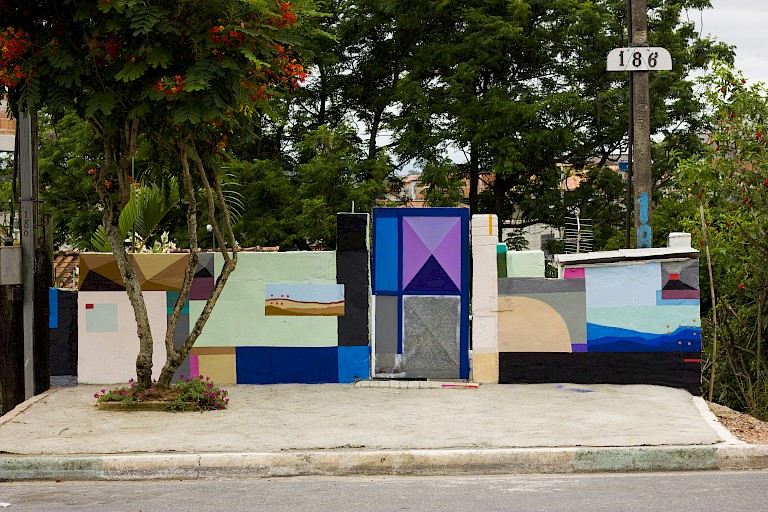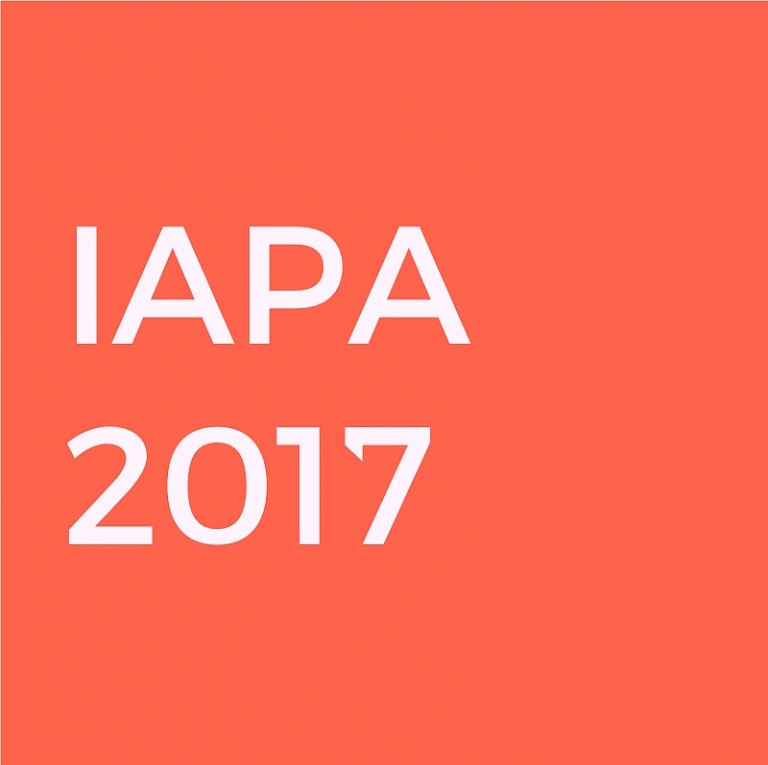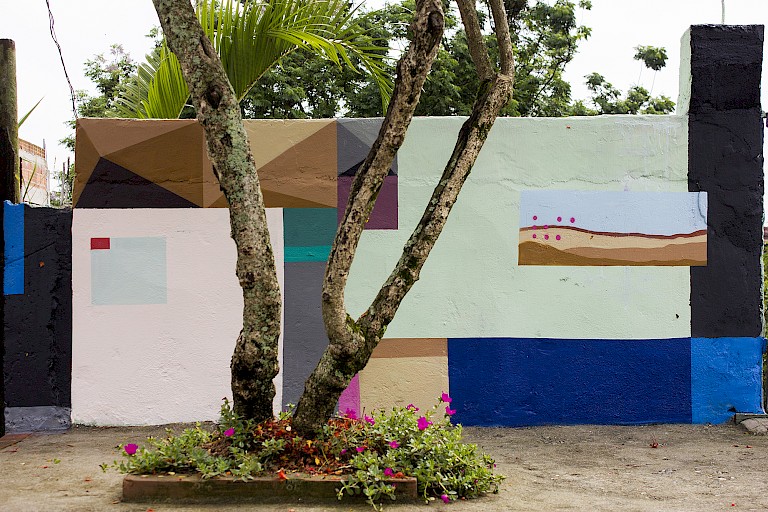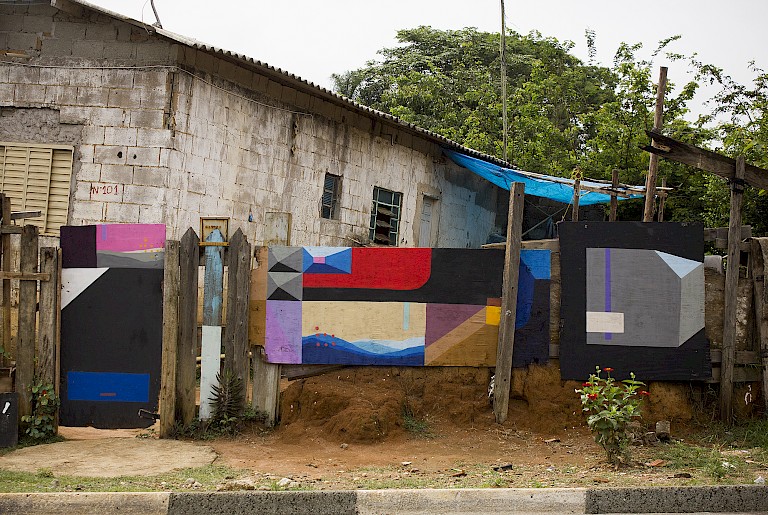



Among the participants of the event program, was the young Matheu Mats, artist, also from Jacarei, whose his works, including murals, have a strong influence on Brazilian popular culture, as well as signs and religious symbols, his works bring figurative elements almost always dream that make up its own highly personal imaginary, still flirts with abstraction. Currently his research consists in observing the architecture, either large cities or in simple houses of his native city, a reflection on the painting in space. Thus creating a fusion of popular and contemporary.
Mats to perform this work chose from residents houses and painted areas that are not very conventional for graffiti, opting for compensated doors, which are usually common in very simple houses in some regions, lack uniformity, but rather layers of wood and are made and nailed by hand. Something linked to the graphics and colors applied only created compositions for each residence.
The interaction with the community was also something latent and important for the paintings, getting to have help of a child who lived in the neighborhood. And the varied experiences among people receptive to the artwork, as others were further back, but came to understand the artist's intention. There were even positive consequences after Mats action: a resident of one of the painted houses shortly thereafter began to tow her home, which previously had not finished, that is, the work provided a good self-esteem with space, awakening will take care of the other areas that have not received the painting in order to make the whole house would be more beautiful.
However, what can be noticed in this action is a reciprocal desire, where besides the artist have the will to intervene in areas that provide the aesthetic improvement of a neighborhood that is ignored by the government, the population itself also wished artistic intervention, understanding that art can be a mechanism not only knowledge, but a social tool that helps to reconfigure the public space.
Mats is a young artist from “Vale do Paraíba” region (Sao Paulo) that
has a lot of talent and has excelled in the area for having a very consistent public art work and involved in popular and local religious culture. And beyond this depth research, the artist come engaging in producing an art that in addition to performing a local intervention, also affects the social. It was something that the residents of “Jardim Pedramar” identified and bound to join for a moment the social cause of the neighborhood, fighting for improvements. So the work involves a series of aesthetic and political issues.
The execution of the murals came from the festival project promoted by neighborhood residents. The intention was to roam the streets, interact
with residents and offer to paint, and even while painting the interaction between artist and audience remained. Including the contact established at that time, Mats continues to follow the consequences of the intervention performed.
All copyright belongs to Shanghai Academy of Fine Arts, Shanghai University.



